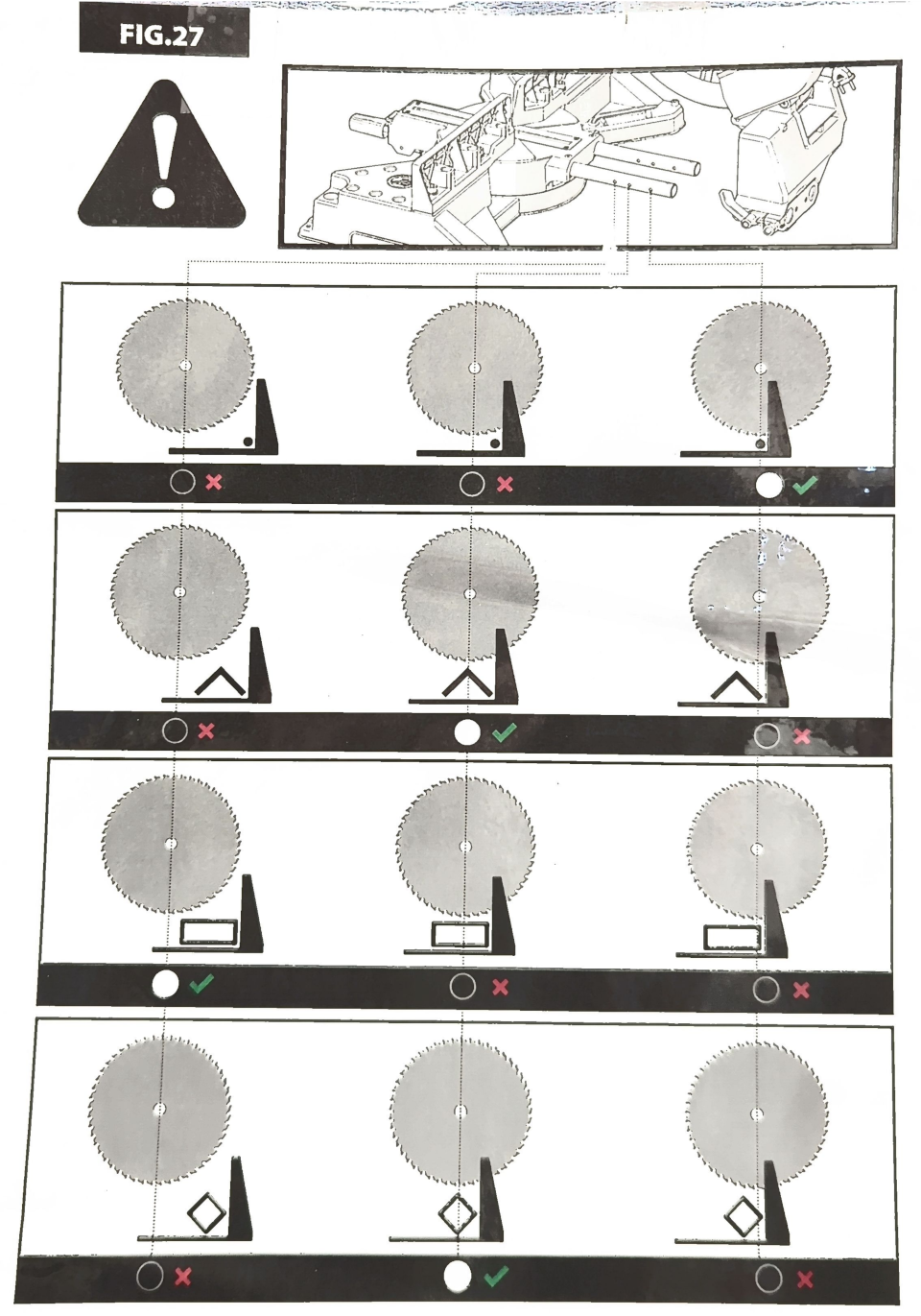Tool Tutorial
Introduction
The Evolution S355MCS Mitre Saw is a powerful tool designed for cutting various materials, including mild steel, and aluminum.
Notes
Safety
Read and understand the instructions. Before operating the saw, thoroughly read the instruction manual to familiarize yourself with its features and safety measures.
Remove all adjusting keys and wrenches. Always check that all adjusting keys and wrenches are removed from the tool before turning it on.
Maintain a clean work area. Keep your work to reduce the risk of accidents. Cluttered areas invite accidents.
PPE
Always wear safety glasses and ear protection: the machine may cause flying debris, and the motor is very loud. Dust masks may be worn to protect against dust.
Common Hazards
Proper use of the clamps and good workholding technique should keep materials from flying out of the machine. Feeding the saw too quickly can cause parts to go airborne. Always wear safety goggles in case of flying debris.
Care
Do not force the blade into the workpiece; let the cutting teeth do the work. Putting too much pressure on the blade can break teeth, reducing the life of the blade and introducing a safety hazard.
Materials
Permitted materials:
- Mild steel
- Aluminum
- Brass
- Bronze
Parts of the Tool
Annotated Image(s)
Part Description
Part Description
Part Description
Basic Operation
(Special topics)
Setting Up
- Inspect the blade to make sure there are no missing teeth and the saw is in good condition.
- Ensure the workpiece is firmly secured using both the front and top clamps. Not all cuts can support both sides of the work, use extreme caution when one side is not clamped.
- Check the blade position. Make sure the blade is positioned correctly front to back.
If needed, adjust the slide at the back of the saw. See the diagrams below for proper positioning.
It is preferable to have the centerline of the blade directly above the part or slightly behind. If the blade is in front of the part, the blade can lift the part up. - Check Blade Path Clearance. Before making a cut, ensure all clamps are fully clear of the blade path and that the cutting head has full range of motion.
When making a mitre cut, it is possible to cut through a clamp. Pins have been added to try and prevent this from happening; always be carful not to damage the clamps.
- Perform a Test Run: Without the blade spinning, perform a test rotation of the cutting head to ensure there are no obstructions.
Workholding
Using the Tool
- Start the Motor. Slide the safety lock on the left side of the trigger switch to the left, then depress the main trigger switch.
Never start the saw with the cutting edge of the blade in contact with the workpiece.
- Make the Cut. Gently lower the cutting head to the material, applying light pressure to prevent the blade from grabbing.
Do not force the machine; let the saw blade do the work. It helps to have the right hand pulling down on the handle and left providing some upward support to the handle, to prevent too fast of a feed. - Complete the Cut. Release the trigger to turn off the motor.


No Comments